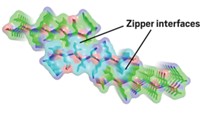Advertisement
Grab your lab coat. Let's get started
Welcome!
Welcome!
Create an account below to get 6 C&EN articles per month, receive newsletters and more - all free.
It seems this is your first time logging in online. Please enter the following information to continue.
As an ACS member you automatically get access to this site. All we need is few more details to create your reading experience.
Not you? Sign in with a different account.
Not you? Sign in with a different account.
ERROR 1
ERROR 1
ERROR 2
ERROR 2
ERROR 2
ERROR 2
ERROR 2
Password and Confirm password must match.
If you have an ACS member number, please enter it here so we can link this account to your membership. (optional)
ERROR 2
ACS values your privacy. By submitting your information, you are gaining access to C&EN and subscribing to our weekly newsletter. We use the information you provide to make your reading experience better, and we will never sell your data to third party members.
Biological Chemistry
Cautionary Tale On Amyloid Inhibitors
January 28, 2008
| A version of this story appeared in
Volume 86, Issue 4
Amyloid inhibitors' tendency to aggregate may be the key to their ability to block amyloid polymerization, according to a new study (Nat. Chem. Biol., DOI: 10.1038/nchembio.65). The finding provides a cautionary tale for the development of drugs for Alzheimer's and other neurodegenerative diseases associated with the polymerization of proteins into amyloid fibrils. Brian K. Shoichet, Brian Y. Feng, and coworkers at the University of California, San Francisco, show that eight small molecules known to form colloidal aggregates in solution actually inhibit fibril formation. What's more, they found evidence that three previously identified amyloid inhibitors—the flavonoid baicalein, 4,5-dianilinophthalimide, and the hydroxyquinoline clioquinol—form similar colloidal aggregates. Colloidal aggregates nonspecifically inhibit their protein prey by physical sequestration. The mechanism by which the aggregation-prone amyloid inhibitors act appears to be similar, they report.




Join the conversation
Contact the reporter
Submit a Letter to the Editor for publication
Engage with us on Twitter